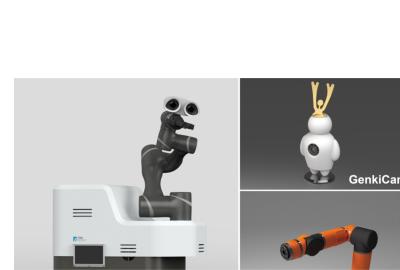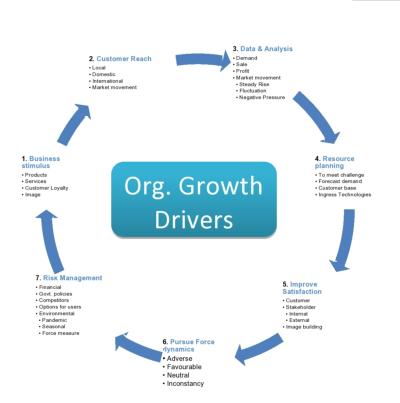In light of the Covid-19 pandemic, implementation of Artificial Intelligence (AI) in existing business becomes imperative to sustain the future growth. In some of the existing businesses, AI functional use-cases those are most likely to be adopted/deployed need further improved with selective strategic innovation by experts. Businesses/companies who understand the importance of long sustainability and growth in business results always try to explore and implement technological improvements in process. These improvements include measures like debottlenecking, speed enhancement, zero breakdowns, removing unnecessary/non-productive steps, enhance automation, augment robotic functions, elevate level of AI in main and sub processes, add additional process for stop gap arrangement to by-pass critical sub process during its failure/engage during product mix. Replacement/addition of new product lines requires high Capex and a strategic decision based on RoI. These are normally difficult during time of uncertainty but improvement in current process shall be a constant demand of business leaders to remain expanding in competitive market.

We witness many examples such as Kodak, Xerox, HMV, Swiss watch makers, and so on, which represent failure to read the market trends and instead wished customers follow their line of thought. Every time an iconic company is faced with the prospect of its core and top of the line, state-of-the-art product becoming obsolete, it has a tendency to bury the contemporary concept, even though they might have invented it. The three examples of world’s leading brands quoted above such as Kodak developed with digital sensors, Xerox developed computers, BlockBuster did the same with video rentals. These companies were #1 in their market segment, where the first two invented a cutting edge product that eventually made their core business/product obsolete, and all three of them turned a blind eye because it was hurting their existing core revenue earning during that time and under estimated potential earnings of their innovations. These are the best examples of cash rich companies who had the technology, right resources (skilled people) had actually left the field open to other companies who developed products that finally replaced their own. Kodak’s was a case of slow in adaption to advance technologies, which their own staff were developing as world’s leading modern technology to replace their own traditional product line.
His Master’s Voice (HMV in Canada) completely ignored the suggestions from their employees to migrate into digital era that was the future for the sale of music albums. They had a firm belief that people always would like to visit their outlets for selection and purchase of their music album. They wound up dead due to the missed action for proactive decision to automate the running system transformed into using digital platform for reaching to their current customers and increase a larger base.
Major success factors for business leaders are quick to adapt by seeing changing market trends, leveraging the full range of modern technologies available to use, and overcoming people’s operational challenges.
It is imperative to identify the available resources within the Organisation, including funds to enumerate new AI applications in current functions on Industry 4.0 platform and also bridging the gap in work flow between consecutive steps in normal operation for long term growth. Use of Industry 4.0 transforms production with higher efficiency by changing traditional production work process and homogenous relationships among suppliers, producers, and customers as well as seamless interface between human and machine.
A huge and considerable efforts is prerequisite performing strategic planning for deploying AI solutions in current semi-automated/automated operation. A collaborative process shall be adopted to understand and generate data for machine learning process over the period to achieve perfection.
A lot goes into deploying AI solutions and achieving the single point control of entire process with visible trend of parameters moving in defined allowable deviation limits from a given set point. Companies who have decided to adopt AI and future advance automation are often eager to get started and quickly complete – but with prejudice notion of success without adaptation of change in process, where skillset of employee need to be trained with positive mind-set to accept these changes to align with management. Business leaders should also have deterministic and positive mind-set before consideration.
Different strategies can be conceived across AI start-ups or tech giants, to strengthen its scope further into business line to successfully implement AI on Industry 4.0 deployment. Many different modules can be adopted for cost-cutting/increase productivity by AI and automation applications, data collection and storage software, free flow information path and analyzing digital tools, displaying information at rightly created lean dashboard.
1. Define and adherence of the optimum timelines and financial resources allocation to deploy AI functions, application and capability
2. Selection of the right mix of technical and nontechnical talent from within enterprises under external experts to make an AI initiative a success, and
3. Achieve and record success in every step of the AI lifecycle, by setting realistic RoI by defining the implementable goals to integrate the AI system live within the existing tech architecture.
The 8 major deployment stages model is conceived as part of selected project implementation. All these stages have multiple steps and are further split into sub critical tasks for study, pre-analysis, initialisation, development, designing, resource allocation, implementation, closely monitoring and post analysing data under the expert guidance to derive best out of this. Replicating of these considered project needs suitable planning for best integration with overall system and accomplishment for displaying outstanding results in medium and long term for project which will lead to meaningful business results.
While due to corona virus there might be less money circulating in the market within the tight economy, there are different ways of working rules and strategy to generate priorities and emerging new sets of technologies for business to adopt. This opens up new opportunities to professional firms/business leaders to get hold of them.
1. Business Stimulus
2. Customer Reach
3. Data & Analysis
4. Resource Planning
5. Improve Satisfaction
6. Pursue Force Dynamics, and
7. Risk Management.
All accessible data related to current situation which poses challenges in current and possible future adverse impact shall be gathered and collectively discussed with stakeholders. Stakeholders help to build a common understanding among each other for the prevailing condition and the desired changes in current practices for predicted outcomes. Team representing stakeholders included in exploring potential new practices by adding intelligence or innovations to determine the positive outcome of business.

It is important for business leaders to maintain pace with emergence of digital technologies which can easily be fit into and uplift the existing operations. Adoption of technology and AI can give dramatic results and pave the path for sustained growth. Two different strategies must go in parallel where in the first continuous minor improvements are in existing process without stoppage of machines/shutdown in the current production line and second is planned development of sub-processes or replacement/improvement of complete process.

AI for machines shall include support of robotic based applications, intelligent sensors, remote operations, machine health diagnostic software features, recipe shelve, five coordinate machine tool auto adjustment, predictive and proactive maintenance features, security of installation/data, sensor/signature based control, optimum energy consumption, trimming down non-productive tasks, rule based operation in process for optimum performance and so on in floor level.
Implementation of digital technologies will transform every aspect of business by using strength of existing workforce and with management commitment. No turnkey solution shall equip the business leaders to keep the pace of development. Expert engagements with employee can
formulate the innovative process to deliver immediate value, while also educate the mind-sets necessary to sustain the new digital transformation.

Jasbir Singh is an Automation Expert with experience in Factory Automation and Line Automation in a large production house. He is an Implementation Strategist, Business Coach and a regular writer on automation, AI, robotics, digital technology, network communication, IIoT, wireless communication, blockchain and use of advance digital technology. Jasbir has a long association with industry to improve factory automation in production lines for productivity improvement in India and overseas by advising and also transforming into digital platform by use of AI.
SeeGlobal International
Gurgaon, Haryana, India
Design and Development Office
Seeglobal International
Plot No. 53 – 54, Sec 16
Noida (UP) India 201310
Subscribe above to receive our eNews, featuring scientific research, new products, and exclusive
promotions. You can easily unsubscribe at any time. Sign up today!